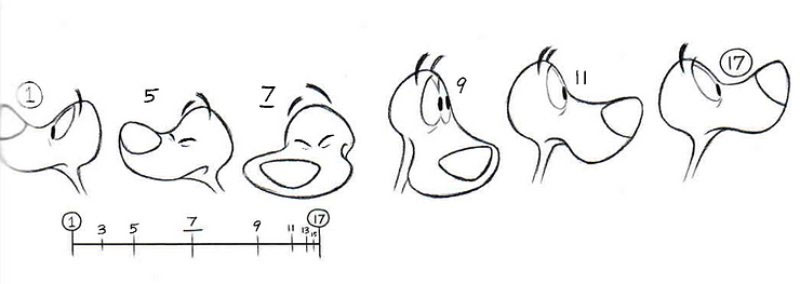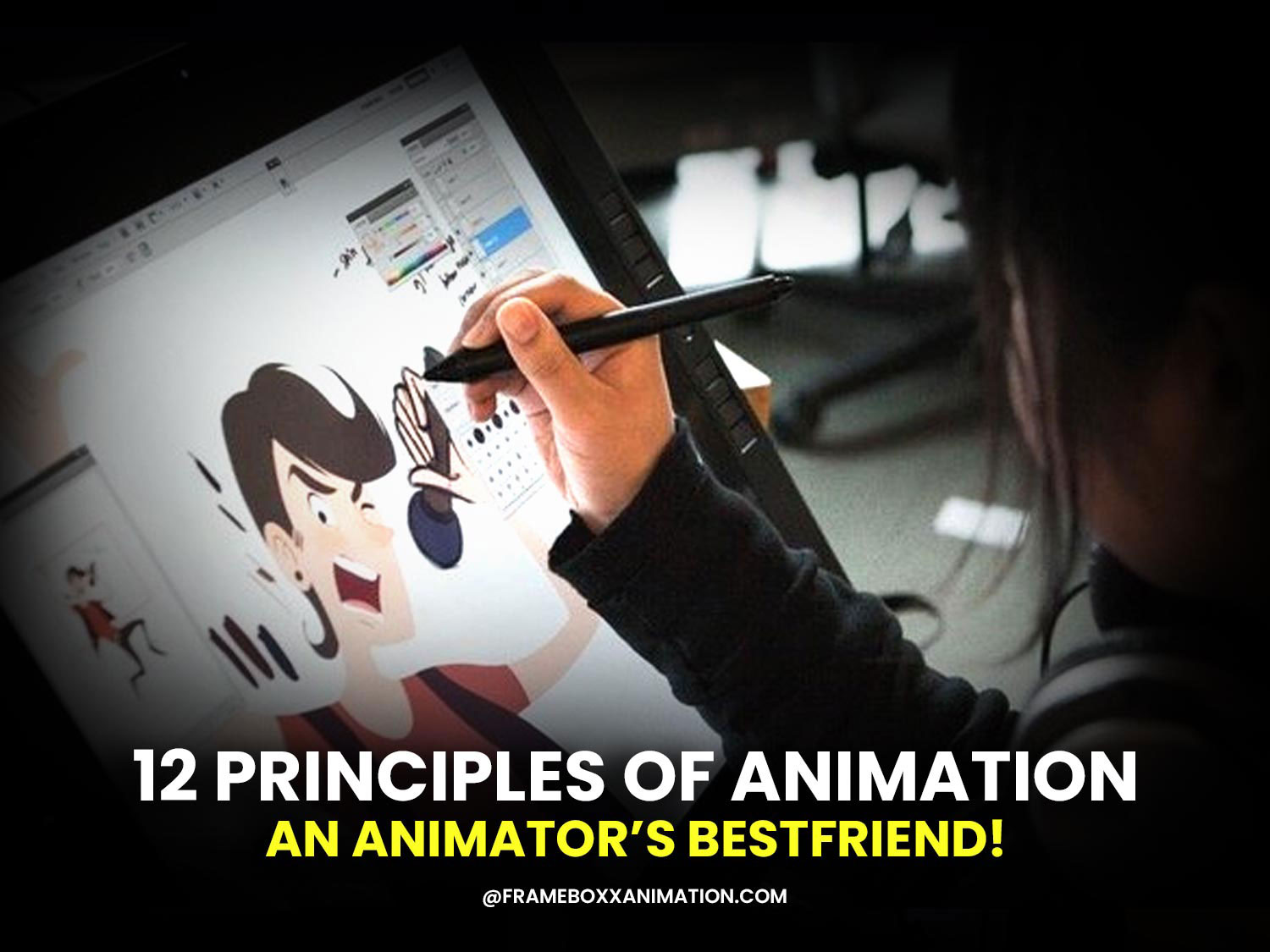Introduction
This blog is in continuation to our previous Part 1 of 12 Principles of Animation. If you are not yet familiar with the Principles of animation. We’d suggest you read them first.
All great animations are based on the fundamental principles of animation. There are 12 Principles in total. Even Disney follows these principles to ensure that their work is of highest quality. These principles have served industry professionals from 1930s to even today.
The 12 Principles of Animation are:
- Squash and Stretch
- Anticipation
- Timing
- Ease in and Ease out
- Exaggeration
- Secondary action
- Straight-ahead action and pose-to-pose
- Follow through and overlapping action
- Arc
- Staging
- Solid drawing
- Appeal
We’ve covered the first 6 principles here, namely
In continuation to the previous article, let’s explore the world of animation through our master principles.
7) Straight-Ahead Action and Pose-to-Pose

Straight ahead action and pose to pose are 2 principles combined into one. To summarize, there are 2 approaches to drawing animation.
Straight Ahead Action: This involves animators to animate frame-by-frame. This creates smooth and fluid movements in the scene. We use it mostly for action sequences, since there’s a lot happening in the scene, we want to ensure that the audience gets to be clear on the movements.
Similarly, the Pose-to-Pose approach is used to mark important positions in the frame. These important positions are called key pose/keyframes. The animators the beginning frame, the end frame and key frames in between. Then, they come back in, and fill in the rest. In the animation industry, the rest of frames are also referred to as “in-betweens”. This technique provides us more control in the scene and we can sketch out more dynamic poses to give an illusion of dramatic effects.
8) Follow Through and Overlapping Action

These principles ensure that our animated characters also follow the real life laws of physics.
Follow through is the concept of extending the motion after the character stops. For example, when a character anticipates jumping, while landing, there’s a buffer time for the character’s knees to bend and prepare for a smooth landing.
Overlapping action refers to the respective offset between the character’s pause and the secondary movement. Example, your character is wearing a hat with pom-poms on top. When they tilt their head from side to side, the character stops their motion, but the pom-poms will keep on dangling for a little while before they come to a stop. This time offset is referred to as overlapping action.
There’s a similar concept called Drag. Drag refers to the delay between the main object and its other parts.Borrowing from the previous example, when the character starts to tilt its head, the pom-poms will start dangling, not at the same time as the character’s motion. There will be a slight delay to convey the laws of physics. This delay is called Drag.
9) Arc

As animators, we intend to follow the rules of physics. Noticeably, most of the objects move in an arc in nature.
Example 1: When you throw a ball in the air, it will follow the undeniable laws of nature, that is to say, it will follow an arc motion to reach its destination.
Example 2: When a character walks, its arms/limbs will follow an arc motion respective to its main body.
This arc can also be noticed when a character moves their head sideways.
The applications of this principle are beyond imagination. We encourage you to explore the possibilities of the arc motion.
10) Staging

Staging is similar to composition in an artwork. Composition refers to the visual placement and hierarchy of elements within a scene. Composition in drawing is noticeable when there’s a main object, most of the objects in the scene will compensate for details to shift the focus to the main object in the scene.
Similarly, Staging prepares the visual hierarchy in animation. In staging, to highlight our main character’s movements, we keep the rest of the movements in the scene to a minimum. Or else, it will all look quite messy.
11) Solid Drawing

Solid Drawing is the most difficult and crucial principle in animation. Solid Drawing refers to the consistency in drawing. For this, you must understand the basics of fundamental drawing, Perspective, Anatomy, Gesture Drawing, weight and balance. If you don’t know where to learn animation/ drawing from, We at Frameboxx Institute offer a variety of courses in Animation. You can opt for a 6-Month Certificate Course, Master Course or even a Degree Program in Animation. We have over 15 modules which also include Pre-Production, that involves the fundamentals of drawing, storyboarding and traditional animation.
Moreover, When trying to animate a character, we must ensure that it follows the overall perspective of the animation, the weight needs to be balanced. If your animation is going to have a distorted perspective intentionally, it’s a necessity to be consistent with that art style in all the scenes.
12) Appeal

Appeal is one of the principles that is high on the list. Appeal is the most crucial visual element that supports and highlights other principles. Appeal refers to the overall charisma, personality, and shape language of the character.
You must have watched the cartoon show, Phineas and Ferb. Phineas and Ferb are a great example of Appeal. The characters are super-simple, easy to draw and recognise.
When you see a solid triangular shape of a head, you easily recognise it must be Phineas, the character. Contrastingly, the other character, Ferb, has an opposite personality and therefore shape language.
Ferb is constructed on Rectangles. This makes him calmer and chill as compared to the sharp edges of a triangle.
Final Word
Hurray!! We’ve completed all the principles of animation. The 12 Principles of Animation serve as a ladder to the overall synchronous movements of your characters. Using these will definitely upscale the overall quality of your work. Now, you’re all set to create your beautiful and appealing animation. Try to follow the principles, explore the unimagined realms of creativity.
Keep creating frame by frame!
Good luck!
For more information on our courses:

